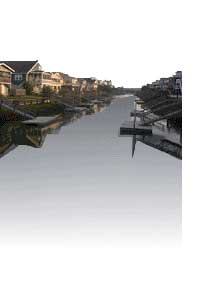Outside the towns, many Britons still lived in round huts. The first
town houses in Britain had wooden frames and wattle and daub walls. Later houses were built of stone, at least on the ground
floor. There were L shaped houses, houses with two or side extensions, as well as houses built around court yards or gardens.
The homes of rich people had bathrooms with water piped from the Main supply.
Windows had shutters, bars, or glass that let in light but was not
see-through. Extra light came from oil lamps or candles. Some houses had rooms with open hearths in the centre, as in the
British huts. Others had rooms with fireplaces in walls. Wealthy owners could afford a hypocaust underfloor heating system,
Although many homes had this only for the dining room.
Most walls were plastered and painted inside and out. Rooms were
decorated with scenes or patterns, or with painted columns and alcoves. Around AD 75, the Romans first used in Britain the
tiny coloured tiled patterning called mosaic, for floors. Floors were also made of larger tiles, wood, stone or marble. In
poorer homes, the floor was hard beaten Earth with perhaps a rug or rush mat on top.
Most people had to fetch their water from public water tanks. Drains
took waste water through sewers in the streets to the nearest river or stream. Water flowed continously through the public
lavatories, where Romans used wet sponges instead of Lavatory paper.
